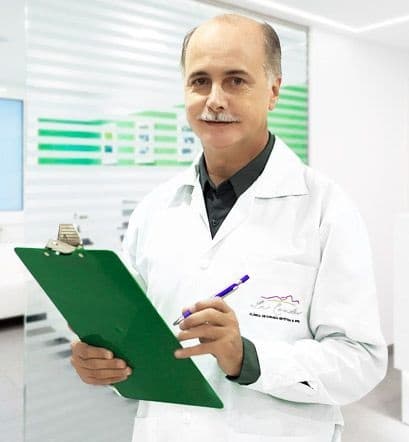A rhinoseptoplasty is a treatment to improve the shape and function of the nose. A regular rhinoplasty is purely for aesthetic purposes. Meanwhile, a rhinoseptoplasty includes correcting breathing problems through the nasal passage and defects from birth or traumas. Plus, improving the shape of the nose for aesthetic purposes.
A septoplasty can be performed by itself to improve functionality, but a more common option is the combined procedure of a septoplasty and rhinoplasty. This is what we call a rhinoseptoplasty.
Who is a candidate for a rhinoseptoplasty
The nasal cavity allows air to enter the respiratory system upon respiration. Structures within the cavity regulate the flow of air and particles it contains. When this does not work correctly and breathing is partially obstructed, it is time to consider a rhinoseptoplasty.

What happens during rhinoseptoplasty surgery?
A rhinoseptoplasty is performed by two doctors working together. This includes an otolaryngologist (ear nose and throat specialist) and our plastic surgeon.
The ENT specialist repositions your nasal septum to the middle of your nose. This may require the doctor to cut and remove parts of your nasal septum before reinserting them in the proper position.
The plastic surgeon performs minor surgery to enhance the look and facial symmetry with the nose.
Both are done together during the same operation and can take about 1.5 hours.
How long is recovery?
Naturally, some discomfort and bruising are to be expected after this treatment which is normal. However, this is controlled with prescribed medication during the first week.
Breathing through your nose after rhinoplasty tends to become easier as early as one week after surgery. Breathing through the nose will improve over the following weeks and will generally feel back to normal by one to two months after surgery.
Rhinoseptoplasty: Further information
Rhinoseptoplasty is widely regarded as the most difficult of all cosmetic and plastic surgery procedures. Even a modest change in nasal contour requires a sophisticated understanding of nasal anatomy.
Couple that with precise surgical technique, and familiarity of the entire structure, and you can see why it is important to take this treatment with a qualified Specialist.
WHICH SURGEON TO CHOOSE?
Firstly, do your homework! Check out Peru’s medical college website (Colegio Medico del Peru) and see if the doctor really has a RNE (National Registry of Specialist) license. Many doctors only have a CMP license, but this is not enough for invasive, specialist procedures.
Finally, talk to us. Make contact and have an in-depth conversation is a good starting point. This is important because you get a feel for the type of clinic we are and the service you can expect to receive.

Dr Flavio Nicolich, Specialist

Dr Daniel Saco-Vertiz, Specialist
SOUNDS INTERESTING? CONTACT US
For additional information or to schedule an appointment with one of our Specialists, please contact us. Leave us a message asking for a video call or a regular call, and we’ll be back with you shortly.
On the other hand, if you use WhatsApp, then this is safe, fast, and effective for rapid communication.

